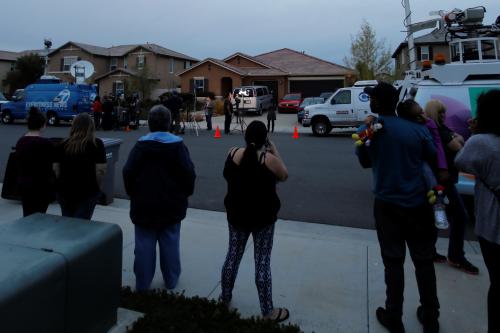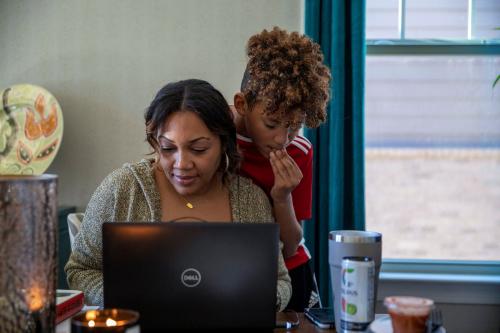The findings of this report were discussed at an event held on May 26, 2022. You can watch video of the event here.
Relationships are often valuable as a means to achieving important goals, such as employment, housing, or education: The power of who you know goes a long way. Scholars often refer to these networks and relationships as social capital. As Camille Busette and her co-authors write in their Brookings report, “How We Rise: How social networks impact economic mobility”:
“Social networks, providing access to support, information, power, and resources, are a critical and often neglected element of opportunity structures. Social capital matters for mobility.”
In this report, we focus on the role of social capital in promoting educational opportunities and outcomes, especially in terms of the transition from high school to postsecondary institutions. We draw in particular on a series of semi-structured interviews with practitioners in selected organizations, who are adopting a social capital-based approach to improving educational outcomes at this key life stage.
The main messages of the paper are as follows:
1. Social capital = relationships that uplift. Social capital is described, defined and measured in a wide variety of different ways. But there is a broad agreement that it consists in the network of relationships that provide support and/or opportunities to individuals. It can extend from families, neighbors, classmates, teachers, mentors and so on. An important distinction is between “bonding” social capital (within existing groups or communities) and “bridging” social capital (across groups).
2. Social capital can improve educational outcomes. Social capital of various kinds – from family to mentors – matters for the transition from high school to postsecondary educational institutions. It is hard to tease out separate causal pathways here, since social capital is correlated with many other factors that predict educational success. But a number of studies have identified a social capital contribution. Social capital begets human capital. One study finds, for example, that the single best predictor of college enrolment among low-income urban minority students is whether their friends have college plans, even controlling for a wide range of variables likely to affect college going .
3. Programs are using social capital to boost opportunity. Many initiatives with the goal of boosting college attendance are based on a social capital approach, through building peer networks, mentoring or advising relationships, and/or through family interventions. We describe four such programs here. One challenge here is a lack of high-quality evaluation of these interventions for most programs, and we urge non-profit organizations and scholars to work together on this front.
4. Some of the key lessons of these programs are that both bridging and bonding social capital have a role to play, with families acting as important accelerators (or brakes) on student opportunities and mentors from different backgrounds providing wider network opportunities; that peer networks within cohorts can provide support during college; and that relationships are most valuable when they start early and are sustained over time.
5. Social capital is an overlooked factor in policy efforts to promote opportunity. Most attention is paid by policymakers to resources in terms of improving access to postsecondary education. But relational factors often matter too, not least in terms of ensuring access to those resources, but also in terms of providing support, information and confidence to young adults as they make what can be a difficult step from K-12 to postsecondary education. More investment in “who you know” side of the opportunity equation may complement the more traditional focus on the “what you know” ingredients.
Read the full report here.
The Brookings Institution is financed through the support of a diverse array of foundations, corporations, governments, individuals, as well as an endowment. A list of donors can be found in our annual reports published online here. The findings, interpretations, and conclusions in this report are solely those of its author(s) and are not influenced by any donation.








